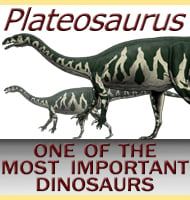Campylodoniscus
In Depth Campylodoniscus was originally named by Friedrich von Huene in 1929 as Campylodon ameghinoi. However, it was later realised that the genus name Campylodon had already been used to name a type of fish. Therefore in 1961, Haubold and Kuhn created a new genus named Campylodoniscus. Because of the lack of good fossils remains, … Read more
